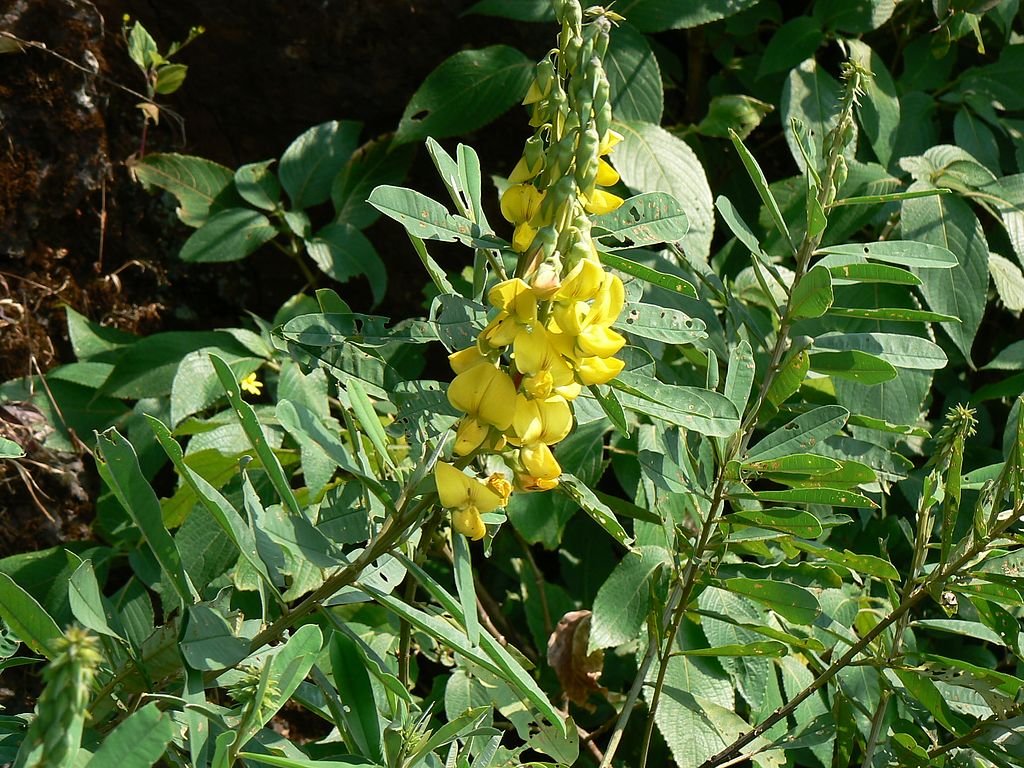
Also called cat’s bell, this herbaceous annual is native to India and Southeast Asia but was introduced the southeastern US, probably as green manure, but it escaped cultivation, naturalized, and now can be found growing in sunny disturbed sites with sandy soil including cultivated fields, pastures, and roadsides throughout the South. It spreads as a contaminant in agricultural equipment, crop seeds, forages and hay, and is considered invasive in the southeastern states and as an noxious weed in the mid-South states. Like other members of the legume family (Fabaceae) including beans and lupines, it fixes nitrogen in the soil. Photo Credit Dinesh Valke Wikimedia Commons
Description: Growing up to 6′ tall, rattlebox has erect, ribbed, stems that are branched above the middle, are green to purplish, and become waxy with age. The alternate, oval leaves are 3-6″ long and hairy on the underside. Twenty to thirty showy flowers appear in elongated terminal racemes from late summer into fall. The pea-like flowers are 1″ long, yellow, and may have dark of red-purple veins at the petal base. The dry, inflated seed pod that follows is 1-3′ long, black when ripe, and contains about 20 seed that detach from the pod and rattle when the wind blows the pod, giving rise to the plant’s common name. The seeds are spread by birds and other wildlife and the plants outcompete native vegetation. The stems, leaves and seeds are toxic to humans and livestock and even dead plants can be dangerous so should be removed from the site.
Control: Since the seeds are the primary means of spread, eliminating plants before seed set by hoeing or mowing is imperative to control. Quick identification and removal will enhance success. In severe infestations, herbicides may be employed in spring before the stems become tough and thick, and therefore resistant to the herbicide.